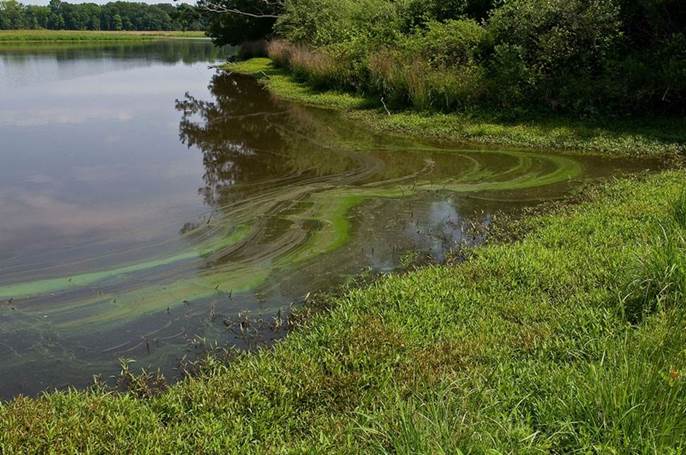Between 2004 and 2014, the total phosphorus content of lakes and streams in the contiguous (lower 48) United States rose, according to surveys by the U.S. Environmental Protection Agency (EPA) reported in the journal Environmental Science & Technology (February 2016). The researchers were not able to identify the source of this phosphorus pollution. Phosphorous pollution, even in small amounts, is known to speed up the process of eutrophication in lakes and streams, which may result in harmful algal blooms, oxygen depletion, and loss of habitat for wildlife. See also: Algae; Allergenicity of cyanobacteria; Biogeochemistry; Ecosystem; Eutrophication; Freshwater ecosystem; Hydrology; Lake; Limnology; Phosphorus; Phosphorus cycle; River; Water pollution; Water resources

The EPA surveys were conducted at five-year intervals for streams (2004, 2009, and 2014) and lakes (2007 and 2012). During the 10 years surveyed, the median total phosphorus in streams increased from 26 to 56 micrograms per liter. For lakes, phosphorus increased from 20 to 37 µg/L over five years. Other nutrients and pollutants surveyed, such as nitrogen, silica, magnesium, and cadmium, were not found to increase in either lakes or streams. See also: Cadmium; Magnesium; Nitrogen; Silica minerals
Freshwater bodies with total phosphorus concentrations of less than 10 µg/L are considered pristine. From 2004 to 2014, the percentage of steams surveyed with total phosphorus concentrations lower than 10 µg/L dropped from 24.5 to 1.6 percent. From 2007 to 2012, the percentage of lakes surveyed with total phosphorus concentrations below 10 µg/L dropped from 24.9 to 6.7 percent. Because pristine water bodies are often located in remote areas, the phosphorus pollution was not believed to have come from the usually suspected sources, such as agricultural runoff (containing animal manure, fertilizer, etc.) and wastewater (sewer and septic systems). See also: Agriculture; Fertilizer; Septic tank; Sewage
The report, which perhaps raises as many questions as it answers, suggested two possible phosphorus sources: extreme precipitation and atmospherically deposited dust. Further work is needed to determine whether either of those factors caused the increase. Another question that remains to be answered is whether the observed trends will eventually spell the end for pristine bodies of water.





